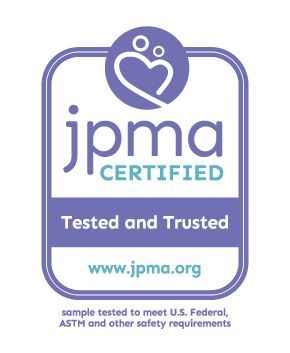Baby & Child Proofing the Home
Each year, babies and children are injured by hazards in and around the home. The good news is that the risk of injury can be reduced or prevented by using child-safety devices and reminding older children in the house to re-secure safety devices after disabling them.
Most of these safety devices are easy to find and are relatively inexpensive. You can buy them at hardware stores, baby equipment shops, supermarkets, drug stores, home improvement stores, on the internet and through mail order catalogs. Safety devices should be sturdy enough to hinder access and yet easy for you to use.
To be effective, they must be properly installed. Follow installation instructions carefully. No device is completely childproof; determined youngsters have been known to overcome or disable them. Here are some child safety devices that can help reduce injuries to young children:
- Use
Safety Locks & Latches for cabinets and drawers in kitchens, bathrooms, and other areas to help prevent poisonings and other injuries. Safety locks and latches on cabinets and drawers can help prevent children from gaining access to medicines, household cleaners, matches, or cigarette lighters, as well as knives and other sharp objects. Even products with child-resistant packaging should be locked away and kept out of reach. This packaging is not childproof. Look for safety locks and latches that adults can easily install and use, but are sturdy enough to withstand pulls and tugs from children.Use
Safety Gates to help prevent falls down stairs and to keep children from entering rooms and other areas with possible dangers. Look for safety gates that children cannot dislodge easily, but that adults can open and close without difficulty. For the top of stairs, only use gates that screw to the wall. Use safety gates that meet current safety standards. Replace older safety gates that have “V” shapes that are large enough to entrap a child’s head and neck.Use
Door Knob Covers and Door Locks to help prevent children from entering rooms and other areas with possible dangers. Door knob covers and door locks can help keep children away from places with hazards. Be sure the door knob cover is sturdy, and allows a door to be opened quickly by an adult in case of emergency.Use
Anti-Scald Devices for faucets and shower heads and set your water heater temperature to 120 degrees Fahrenheit to help prevent burns from hot water. Anti-scald devices for regulating water temperature can help reduce the likelihood of burns.Use
Window Guards and Safety Netting to help prevent falls from windows, balconies, decks, and landings. Check these safety devices frequently to make sure they are secure and properly installed and maintained. Limit window openings to four inches or less, including the space between the window guard bars. If you have window guards, be sure at least one window in each room can be easily used for escape in a fire. Window screens are not effective for preventing children from falling out of windows.Use
Corner and Edge Bumpers to help prevent injuries from falls against sharp edges of furniture and fireplaces. Be sure to look for bumpers that stay securely on furniture or hearth edges.Use
Outlet Covers and Outlet Plates to help prevent electrocution. Outlet covers and outlet plates can help protect children from electrical shock and possible electrocution. Be sure outlet protectors cannot be easily removed by children and are large enough so that children cannot choke on them. If you are replacing receptacles, use a tamper-resistant type.The U.S. Consumer Product Safety Commission recommends using
Cordless Window Coverings in homes with young children, in order to help prevent strangulation. Children can wrap window covering cords around their necks or can pull cords that are not clearly visible but are accessible and become entangled in the loops. Find out if your window coverings are safe for your child by visiting the Window Covering Safety Council at
https://windowcoverings.org/window-cord-safety/. You can request a free retrofit kit by calling the Window Covering Safety Council at 800-506-4636 or visit
https://fulfillmentinnovations.com/. Window blinds that have an inner cord (for raising the slats of the blinds) can be pulled by a child and form a potentially deadly loop. Consumers should immediately repair these types of blinds. Consumers should know that Window Covering Safety Council’s retrofit kits do not address the dangling pull cord hazard associated with many common window blinds.Use
Anchors to Avoid Furniture and Appliance Tip-Overs. Furniture, TVs and ranges can tip over and crush young children. Deaths and injuries occur when children climb onto, fall against or pull themselves up on television stands, shelves, bookcases, dressers, desks, chests and ranges. For added security, anchor these products to the floor or attach them to a wall. Free standing ranges and stoves should be installed with anti-tip brackets.
JPMA Certification Seal
Always look for JPMA Certified products for extra confidence in your choice. JPMA currently certifies more than 2,000 products in 29 product categories, including carriages & strollers. Each certified product is sample tested annually, as well as after any material change, at an independent laboratory to guarantee it meets the highest safety requirements. To confirm a products certification status, look for the JPMA certification seal on your product packaging, or search by product category on JPMA's Certification Directory.


















